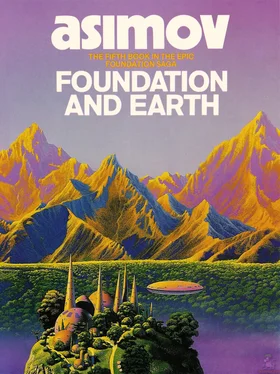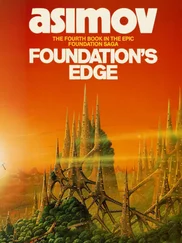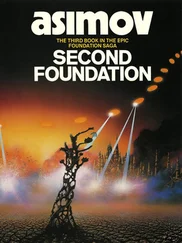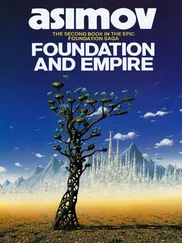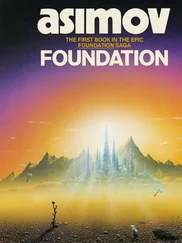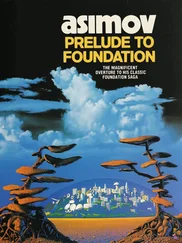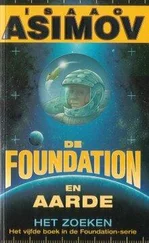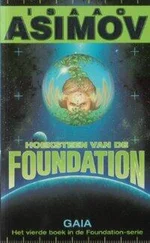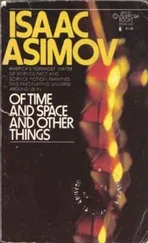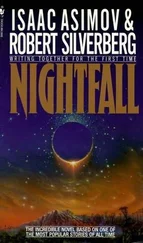He pointed to the planet on the viewscreen, and said, “I haven’t found more than two or three craters, each quite small.”
“Does that make a difference, Golan? Really?”
“A difference? Certainly. How can you ask?”
Pelorat gestured helplessly. “It’s all a mystery to me. I was a history major at college. I took sociology and psychology in addition to history, also languages and literature, mostly ancient, and specialized in mythology in graduate school. I never came near planetology, or any of the physical sciences.”
“That’s no crime, Janov. I’d rather you know what you know. Your facility in ancient languages and in mythology has been of enormous use to us. You know that. —And when it comes to a matter of planetology, I’ll take care of that.”
He went on, “You see, Janov, planets form through the smashing together of smaller objects. The last few objects to collide leave crater marks. Potentially, that is. If the planet is large enough to be a gas giant, it is essentially liquid under a gaseous atmosphere and the final collisions are just splashes and leave no marks.
“Smaller planets which are solid, whether icy or rocky, do show crater marks, and these remain indefinitely unless an agency for removal exists. There are three types of removals.
“First, a world may have an icy surface overlying a liquid ocean. In that case, any colliding object breaks through the ice and splashes water. Behind it the ice refreezes and heals the puncture, so to speak. Such a planet, or satellite, would have to be cold, and would not be what we would consider a habitable world.
“Second, if a planet is intensely active, volcanically, then a perpetual lava flow or ash fallout is forever filling in and obscuring any craters that form. However, such a planet or satellite is not likely to be habitable either.
“That brings us to habitable worlds as a third case. Such worlds may have polar ice caps, but most of the ocean must be freely liquid. They may have active volcanoes, but these must be sparsely distributed. Such worlds can neither heal craters, nor fill them in. There are, however, erosion effects. Wind and flowing water will erode craters, and if there is life, the actions of living things are strongly erosive as well. See?”
Pelorat considered that, then said, “But, Golan, I don’t understand you at all. This planet we’re approaching—”
“We’ll be landing tomorrow,” said Trevize cheerfully.
“This planet we’re approaching doesn’t have an ocean.”
“Only some thin polar ice caps.”
“Or much of an atmosphere.”
“Only a hundredth the density of the atmosphere on Terminus.”
“Or life.”
“Nothing I can detect.”
“Then what could have eroded away the craters?”
“An ocean, an atmosphere, and life,” said Trevize. “Look, if this planet had been airless and waterless from the start, any craters that had been formed would still exist and the whole surface would be cratered. The absence of craters proves it can’t have been airless and waterless from the start, and may even have had a sizable atmosphere and ocean in the near past. Besides, there are huge basins, visible on this world, that must have held seas and oceans once, to say nothing of the marks of rivers that are now dry. So you see there was erosion and that erosion has ceased so short a time ago, that new cratering has not yet had time to accumulate.”
Pelorat looked doubtful. “I may not be a planetologist, but it seems to me that if a planet is large enough to hang on to a dense atmosphere for perhaps billions of years, it isn’t going to suddenly lose it, is it?”
“I shouldn’t think so,” said Trevize. “But this world undoubtedly held life before its atmosphere vanished, probably human life. My guess is that it was a terraformed world as almost all the human-inhabited worlds of the Galaxy are. The trouble is that we don’t really know what its condition was before human life arrived, or what was done to it in order to make it comfortable for human beings, or under what conditions, actually, life vanished. There may have been a catastrophe that sucked off the atmosphere and that brought about the end of human life. Or there may have been some strange imbalance on this planet that human beings controlled as long as they were here and that went into a vicious cycle of atmospheric reduction once they were gone. Maybe we’ll find the answer when we land, or maybe we won’t. It doesn’t matter.”
“But surely neither does it matter if there was life here once, if there isn’t now. What’s the difference if a planet has always been uninhabitable, or is only uninhabitable now?”
“If it is only uninhabitable now, there will be ruins of the one-time inhabitants.”
“There were ruins on Aurora—”
“Exactly, but on Aurora there had been twenty thousand years of rain and snow, freezing and thawing, wind and temperature change. And there was also life—don’t forget life. There may not have been human beings there, but there was plenty of life. Ruins can be eroded just as craters can. Faster. And in twenty thousand years, not enough was left to do us any good. —Here on this planet, however, there has been a passage of time, perhaps twenty thousand years, perhaps less, without wind, or storm, or life. There has been temperature change, I admit, but that’s all. The ruins will be in good shape.”
“Unless,” murmured Pelorat doubtfully, “there are no ruins. Is it possible that there was never any life on the planet, or never any human life at any rate, and that the loss of the atmosphere was due to some event that human beings had nothing to do with?”
“No, no,” said Trevize. “You can’t turn pessimist on me, because it won’t work. Even from here, I’ve spotted the remains of what I’m sure was a city. —So we land tomorrow.”
Bliss said, in a worried tone, “Fallom is convinced we’re going to take her back to Jemby, her robot.”
“Umm,” said Trevize, studying the surface of the world as it slid back under the drifting ship. Then he looked up as though he had heard the remark only after a delay. “Well, it was the only parent she knew, wasn’t it?”
“Yes, of course, but she thinks we’ve come back to Solaria.”
“Does it look like Solaria?”
“How would she know?”
“Tell her it’s not Solaria. Look, I’ll give you one or two reference book-films with graphic illustrations. Show her close-ups of a number of different inhabited worlds and explain that there are millions of them. You’ll have time for it. I don’t know how long Janov and I will have to wander around, once we pick a likely target and land.”
“You and Janov?”
“Yes. Fallom can’t come with us, even if I wanted her to, which I would only want if I were a madman. This world requires space suits, Bliss. There’s no breathable air. And we don’t have a space suit that would fit Fallom. So she and you stay on the ship.”
“Why I?”
Trevize’s lips stretched into a humorless smile. “I admit,” he said, “I would feel safer if you were along, but we can’t leave Fallom on this ship alone. She can do damage even if she doesn’t mean to. I must have Janov with me because he might be able to make out whatever archaic writing they have here. That means you will have to stay with Fallom. I should think you would want to.”
Bliss looked uncertain.
Trevize said, “Look. You wanted Fallom along, when I didn’t. I’m convinced she’ll be nothing but trouble. So—her presence introduces constraints, and you’ll have to adjust yourself to that. She’s here, so you’ll have to be here, too. That’s the way it is.”
Bliss sighed. “I suppose so.”
Читать дальше
